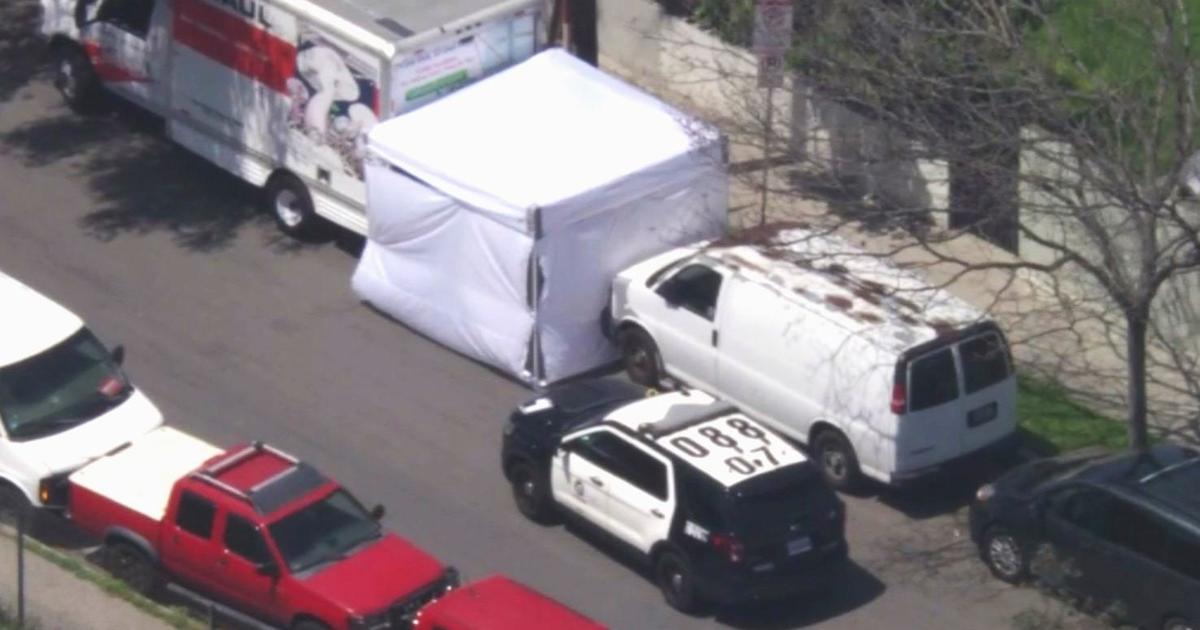Auto Crisis Worsens As Plants Shut Down In Japan
TOKYO (AP) — The auto industry disruptions triggered by Japan's earthquake and tsunami will worsen in the coming weeks.
Podcast
CBS News' Jeff Gilbert Reports
Car buyers will have difficulty finding the model they want in certain colors, thousands of auto plant workers will likely be told to stay home, and companies such as Toyota, Honda and others will lose billions of dollars in revenue. More than two weeks since the natural disaster, inventories of crucial car supplies -- from computer chips to paint pigments -- are dwindling fast as Japanese factories that make them struggle to restart.
Because parts and supplies are shipped by slow-moving boats, the real drop-off has yet to be felt by factories in the U.S., Europe and Asia. That will come by the middle of April.
"This is the biggest impact ever in the history of the automobile industry," said Koji Endo, managing director at Advanced Research Japan in Tokyo.
Much of Japan's auto industry -- the second largest supplier of cars in the world -- remains idle. Few plants were seriously damaged by the quake, but with supplies of water and electricity fleeting, no one can say when factories will crank up. Some auto analysts said it could be as late as this summer.
There are signs, though, that things might not be as bad as analysts are predicting. Nissan Motor Co., which has seen production stop in several areas, said Monday that it expects factories to be back in operation in weeks rather than months.
The company has studied all of its parts suppliers and companies that supply parts to them and has determined that the situation isn't as dire as some predictions, spokesman Brian Brockman said Monday.
"It remains a fairly dynamic issue," he said. "We think we'll be back up in full production in a matter of weeks."
Yet at least in the short term, problems remain. Hitachi Automotive Systems, which makes parts such as airflow sensors and drive control systems, is waiting for its suppliers to restart while dealing with its own problems. Its plants are without water and gas, and have rolling electricity blackouts. Workers are repairing crumpled ceilings, fallen walls and cleaning up shattered glass. A spokesman said he doesn't know when its plants will reopen.
The uncertainly has suppliers, automakers and dealers scrambling. And it exposes the vulnerability of the world's most complex supply chain, where 3,000 parts go into single car or truck. Each one of those parts is made up of hundreds of other pieces supplied by multiple companies. All it takes is for one part to go missing or arrive late, and a vehicle can't be built.
When General Motors briefly shut a pickup plant in Shreveport, Louisiana, due to a lack of parts, it caused the partial closing of a New York factory that supplies engines for those trucks. Sweden's Volvo has warned that its production could be disrupted because it is down to a week's worth of some parts.
Car buyers will soon see higher prices and fewer choices. Some car colors will be harder to get because a paint pigment factory in Japan was damaged and shut production. As a result, Ford is telling dealers to stop ordering "tuxedo black" models of its F-150 pickup and Expedition and Navigator SUVs. It's also shifting away from some reds. The moves are precautionary, Ford said. Chrysler has stopped taking orders for vehicles in 10 paint colors.
The plant that makes the pigment, run by Merck KGaA, won't resume production for four to eight weeks, and that depends a lot on progress in cleaning up the nearby damaged nuclear power plant, a company spokeswoman said.
The factory is in Onahama in northeast Japan, about 30 miles from the damaged Fukushima Dai-ichi power plant, which is leaking radiation.
"For both the timing of the repair start and for its timely completion, we are dependent upon the availability of infrastructure and utilities as well as upon developments at the Fukushima power plant," Merck KGaA spokeswoman Phyllis Carter said Monday.
The company makes pigments around the world, but the Onahama plant is the only one that produces the type used in many automotive paints, she said.
The lack of colors worries some dealers, especially when popular ones like black could be in short supply.
"It's hard enough to sell a $60,000 Navigator in this economy," said Fortunes O'Neal, general manager at Park Cities Ford in Dallas. "We don't want to have to tell customers, `You've got to pick another color."'
Customers also face rising prices for models like Toyota's Prius, which is made only in Japan. Fears of falling supply have some dealers driving a hard bargain with customers who want the fuel-efficient hybrid as gasoline prices rise. Recent discounts of 5 to 10 percent on that car are disappearing.
Japanese carmakers, who have shut most of their domestic plants, are warning that some of their overseas factories will stop running, too, in an effort to conserve supplies. Toyota and Honda expect shutdowns at North American plants. Honda said production could be interrupted after April 1. Most of its parts are made in the region, but a few critical ones still come from Japan.
Goldman Sachs estimates the shutdowns are costing Japanese automakers $200 million a day, which adds up to $2.8 billion for just the past two weeks. Each week of continued shutdowns costs $1.4 billion. By comparison, Toyota made $2.3 billion in all of 2010, and its sudden acceleration recalls cost $2 billion. The cost of damage from Japan's natural disaster could dwarf that recall, which was considered Toyota's biggest crisis ever.
Much depends on how many spare components automakers have in stock -- which is probably few. Japan's automakers spearheaded lean manufacturing, under which parts are delivered to plants the same day they are used. Automakers are still receiving parts that were put on ships weeks ago, but those supplies will dwindle.
After the earthquake hit, car companies began the long process of figuring out which parts are in danger of running out. That means figuring out where every piece in every part comes from.
"Everyone is putting on the brakes a little bit and taking a look to see where they are affected," said Paul Newton, an analyst with IHS Automotive.
Companies will shut down plants as soon as some parts start running out, which could start happening in the next four to six weeks, he said. "You will see it happen almost daily."
IHS Automotive predicts that one-third of daily global automotive production will be cut. That means about 5 million vehicles worldwide won't be built, out of the 72 million vehicles planned for production in 2011.
Although most Japanese auto parts makers are not located in the areas that were inundated by the tsunami, between quake damage, electricity outages and water cutoffs, many factories in the region remain paralyzed.
Suppliers could be running again in April, but it could take until May or June for the entire supply base to be back.
Some car manufacturers, meanwhile, may shift operations to deal with the crisis. Nissan, for example, is thinking of moving some engine production to Tennessee from Japan.
But those shifts won't be easy. Lean inventories make it hard for automakers to suddenly change sources of supply. And plants that build car electronics, for example, have stringent safety requirements and exacting high-tech specifications that limit a company's flexibility, said Christopher Richter, an analyst at CLSA Asia Capital Markets. A supplier for the computer chip that triggers an air bag, for example, can't be switched quickly.
But car executives can keep this from becoming a total disaster: They can allocate scarce parts to more popular or profitable vehicles, keeping those assembly lines running while slowing the less profitable ones.
(© Copyright 2011 The Associated Press. All Rights Reserved. This material may not be published, broadcast, rewritten or redistributed.)



